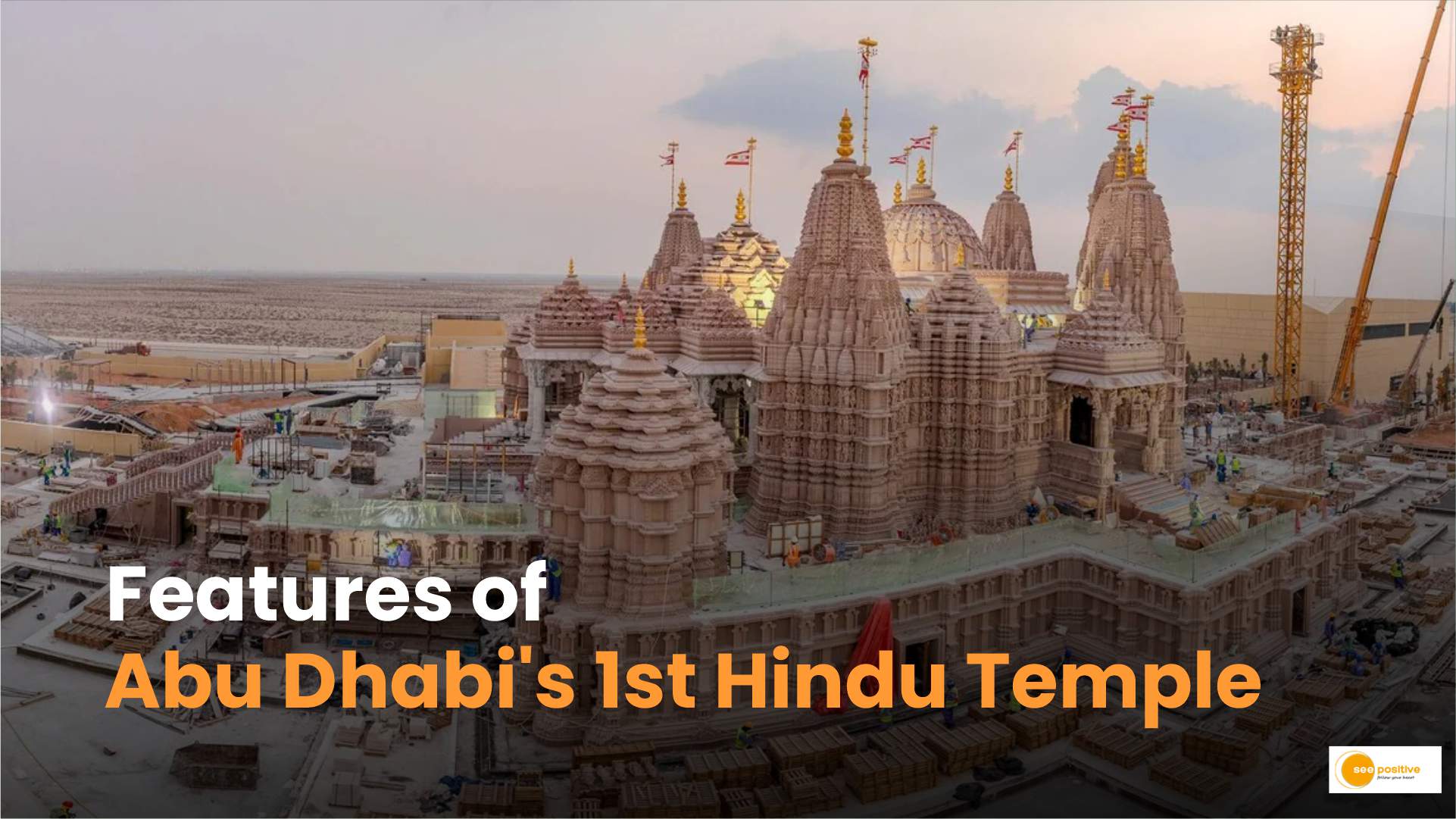As Prime Minister Narendra Modi is poised to inaugurate Abu Dhabi’s first Hindu temple on February 2024, let’s explore the architectural splendour that defines the Bochasanwasi Akshar Purushottam Swaminarayan Sanstha (BAPS) Mandir.
This monumental structure, crafted from marble and pink sandstone sourced from northern Rajasthan, stands as a testament to cultural integration and artistic finesse.
The BAPS Mandir is not merely a place of worship; it is an architectural marvel that seamlessly blends traditional aesthetics with modern design. The use of over 25,000 intricately carved marble pieces against a backdrop of pink sandstone creates a visual symphony that captivates the beholder.
The two domes, seven Shikhars representing the UAE’s seven emirates, and 402 pillars form the foundation of an awe-inspiring structure that reflects the rich cultural heritage of India.
A Fusion of Tradition and Modernity
What sets the BAPS Mandir apart is its ability to fuse tradition with modernity. The temple’s facade showcases a meticulous blend of heat-resistant nano tiles and heavy glass panels, ensuring not only durability but also a harmonious integration of traditional and contemporary materials.
The choice of materials and the skilful craftsmanship of artisans from Rajasthan give the temple a unique character that resonates with both the rich heritage of India and the modern ethos of the UAE.
Artistic Narratives on Every Surface
The artistic narratives engraved on every surface of the temple tell stories that transcend time and geography. Each Shikhar serves as a canvas depicting tales from the Ramayana, Shiv Purana, Bhagavatam, and Mahabharata.
The intricate carvings tell the tales of revered deities such as Lord Jagannath, Lord Swaminarayan, Lord Venkateshwara, and Lord Ayyappa.
The ‘Dome of Harmony,’ a symbolic representation of the balance of the five natural elements – earth, water, fire, air, and space, adds a unique touch to the temple’s artistic narrative.
Sustainable Construction Practices
The construction of the BAPS Mandir incorporates sustainable practices, aligning with the global shift towards eco-conscious building. Covering 27 acres in Abu Mureikhah, near Al Rahba, the temple’s strategic location was chosen with careful consideration.
An eco-conscious approach is evident in the integration of fly ash into the concrete mix, reducing the carbon footprint.
Notably, the BAPS Mandir stands as the first Hindu traditional mandir to undergo comprehensive digital modelling and seismic simulation, showcasing a commitment to eco-friendly Hindu architecture.
Dimensions and Facilities
The BAPS Mandir in Abu Dhabi is not just grand in its artistic expressions; it is also colossal in its dimensions. Standing at 32.92 meters in height, 79.86 meters in length, and 54.86 meters in width, it is the largest temple in West Asia.
Architectural elements include two domes, seven spires, 12 dome-like structures, and 402 pillars. The complex is designed to cater to various needs, housing a visitor center, prayer halls, exhibitions, learning areas, children’s sports area, thematic gardens, water features, a food court, and a books and gift shop.
The incorporation of advanced sensor technology throughout the temple’s foundation ensures continuous monitoring of earthquake activity, temperature fluctuations, and pressure changes.
A Beacon of Interfaith Understanding
Beyond its physical attributes, the BAPS Hindu Mandir emerges as a beacon of interfaith understanding and cultural collaboration. Ambassadors and spouses from 42 countries were recently treated to a preview of the temple, underlining its global significance.
The temple is recognized not only for its architectural grandeur but also as a powerful agent of interfaith and intercultural harmony, receiving gratitude from both the UAE and Indian leadership.
Positive takeaway
The BAPS Hindu Mandir in Abu Dhabi is more than a place of worship; it is a symbol of unity, cultural richness, and sustainable innovation. As it prepares for its official inauguration, the temple paves the way for a future where cultural heritage and cutting-edge technology coexist harmoniously, fostering community, sustainability, and interfaith understanding.


